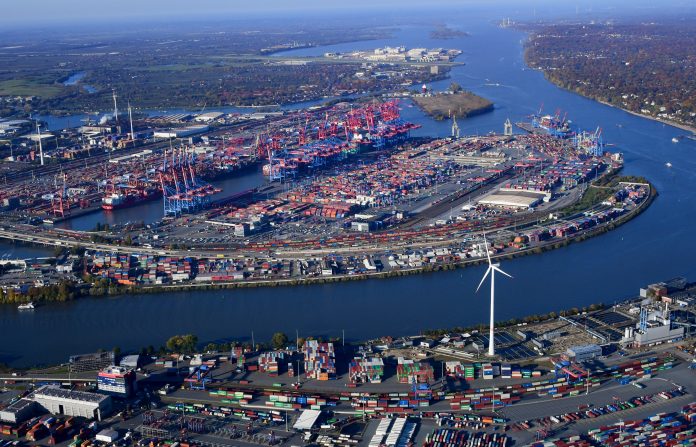Container throughput at the port of Hamburg increased by 1.8% in the first quarter of this year, reaching a total of 2.2 million TEU.
On the other hand, total seaborne cargo decreased by 2.8% on an annual basis, to 31.2 million tons.
“After a very good start in January, the start of the war in Ukraine led to an extension of EU sanctions in trade with Russia during February. In the Port of Hamburg, we then rapidly noticed a downturn in container traffic with Russian ports. That was caused primarily by the reactions of many shipping companies in ceasing to call at Russian ports,” said Axel Mattern, CEO of Hamburg Marketing.
The Port of Hamburg Railway handled 1.6% more volume, carrying 12 million tons of cargo.
In terms of containers, they amounted to 0.7 million TEU, an increase of 1.4%.
“At 81%, the collapse in container traffic with Russian ports matched expectations. At the same time, we saw a steep increase in container services with Polish ports and those in the Baltic states. Larger volumes in traffic with these countries contributed towards offsetting the reduction in the Russia trade,” said Mattern.
In the first quarter, container traffic with China totaled 0.7 million TEU, representing a gain of 6.2%.
The ranking of Hamburg’s trading partners for container handling is followed by the USA -down 5.7%, Singapore – up 9.1%, Poland – up 45.2%, Sweden – up 10.4%, Russia – down 29.3%, and Great Britain – down 2.9%.
The number of calls from container vessels decreased slightly during the quarter.
However, Megamax vessels with more than 18,000 slots were calling the Port of Hamburg much more frequently than in earlier years, incl. pre-crisis 2019.
Port of Hamburg expects total handling by 2022 to be significantly lower than the volume of 130 million tonnes / nine million TEU expected before the Ukraine war.







